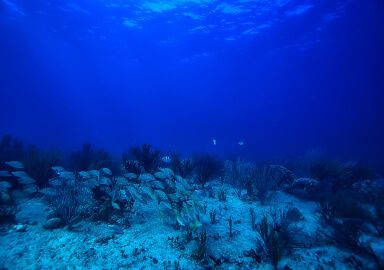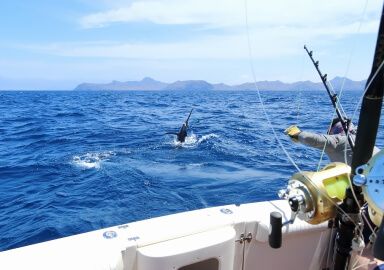Calico Bass
What’s colorful, looks like freshwater bass, and is iconic in California? With its bold markings and aggressive nature, calico bass is a favorite for inshore anglers of the Golden State.
View 4 listings
4
listings
–
price starting from
1
countries
–
to the nearest trip
About Calico Bass
The calico bass (Paralabrax clathratus), also known as the kelp bass, is a popular saltwater game fish native to the Pacific Coast of North America. This “salt bass” thrives in rocky coastal habitats and kelp forests, where it uses its camouflage to ambush prey. Its distinctive coloration — featuring mottled brown, olive, and yellow patterns — helps it blend seamlessly with its environment. With its spiny dorsal fins and big mouth, it has an uncommon resemblance to freshwater bass, and enjoy a similar cult status among Southern California anglers.
Calico bass are opportunistic predators that feed on smaller fish, crustaceans, and squid. Spawning takes place in the peak of summer. They typically grow to an average size of 1–3 pounds, though larger specimens exceeding 8 pounds, known as "trophy calicos," are highly prized. The world angling record stands at 6.54 kg (14 lb 7 oz) for a fish caught off the coast of Newport Beach, California. These fish are long-living, and it apparently takes a calico bass about twenty years to reach trophy size.
Calico bass are known for their strength and feisty demeanor, offering anglers an exhilarating battle on light tackle. Beyond their sporting appeal, calico bass are valued for their mild, flaky meat. However, due to their importance in maintaining the balance of coastal ecosystems, conservation measures such as size and bag limits are in place. Catch-and-release is often encouraged even for larger fish.
How to Catch?
Calico bass are known for their hard strikes and determined fights, making them an exciting target for anglers of all skill levels. As their other name suggests, they favor kelp beds, but are often found around structures such as rocky reefs and jetties as well. One other thing that they want is current, and, of course, abundance of food. Calico bass are often active at night, and in the daytime, dawn and dusk are prime fishing times.
Calico bass don’t mind shallows, and feed actively on rising tide. Some anglers try to catch them on the fly, and spinning with artificial lures like crankbaits, and jerkbaits can also be effective. Slow retrieves with soft plastics rigged on weedless hooks can help minimize snags while enticing strikes. Topwater lures are also an excellent option during low-light conditions, as they mimic the movements of prey fish skimming the surface.
However, fishing with live or dead bait such as anchovies, sardines, or squid, offers best chances of catching a good-sized calico bass. Use a sliding sinker rig to present the bait close to the structure where calico bass are likely to be hiding. Look for areas with kelp beds, rocky reefs, or submerged wrecks, and position your bait or lure strategically to draw them out.
Patience and precision are key when fishing for calico bass, as they are highly structure-oriented and quick to retreat into cover. In fact, it’s said that the bigger a calico bass is, the more likely it is to go for structure. “Giving them line” is not recommended; instead, you want to try to stop their escape as soon as you can, which results in an exciting fight. Calico bass are one of the favored targets of California charter boat captains, and offer an unforgettable experience for inshore anglers on the Pacific Coast.











